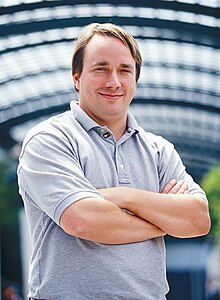Chakra is a desktop distribution forked from Arch Linux and its default desktop environment is KDE. Chakra is pure KDE and its developed using QT toolkit. In my opinion KDE is the finest desktop environment in the world, for any platform, and Chakra provides the smoothest, fastest KDE desktop experience.
KDE desktop environment.
Best thing about Chakra is, like Arch Linux it is a rolling-release distribution, which means once you install it in your computer, you never need to reinstall when a new version comes along – the process of applying updates takes care of that.
That being said, the simpleness and clarity in code and system architecture makes Chakra a great distro for users who want to learn the ins-and-outs of Linux. If you are a beginner and don't mind reading wiki's and forums and putting in a little effort, Chakra and its community is a great place to start!
This is the knowledge i gain after searching through internet and reading many forums,wiki,FAQ etc. I think this post will help to a new Chakra user.
To use Chakra mainly you'll have to know about following things.
Package Manager
Chakra uses a package manager called "pacman" and its a command line application developed by Arch Linux.
They are still working on a GUI package manager,for now you'll have to use pacman.
Click here to know more about pacman.
Dependencies
Some software (lots of software, actually) needs other software in order to compile, install, and run.
When a piece of software needs another piece of software, we call the piece of software it needs a dependency.
Repositories
Packages are typically kept in online repositories. Chakra maintains five main officially supported repositories:
Core : The core system; this is the stuff you need to have a running, bootable Linux system.
Platform : Extra software that doesn't require a graphical session, along with some dependencies for KDE.
Desktop : The KDE desktop environment.
Apps : Graphical applications.
Games : Games.
There's also the lib32 repository, which contains 32-bit software compiled to run on a 64-bit system.
Then there's the testing repository, where software gets tested before being moved to the main repos.
Only the main repositories are enabled on a default Chakra installation.
Mirrors
The repositories are hosted online by servers in various locations throughout the world;
these are known as mirrors because if they're all up-to-date they ought to be identical.
The more mirrors there are the less bandwidth is demanded of any one of them, and the faster users can generally download software.
Chakra now has over thirty of them, and more are being added all the time. The available mirrors are already enabled in your default setup.
Bundles
These are applications which are developed using GTK toolkit.
As Chakra is pure KDE and its developed using QT toolkit, official Chakra package repositories do not, and never will, contain any GTK apps.
There for if you want to use a GTK based apps you can get it as a bundle.
You can get bundles easily from bundle manager.
CCR - Chakra Community Repositories
These are packages contribute by people,there are many useful and needed apps still aren't added to official repositories.
Therefore people can contribute packages for CCR including GTK apps and their dependencies.
Now its time to download and install Chakra.
If you have decided to install chakra, before downloading it check your processor's architecture
.
For that run the following command in your terminal or command prompt.
In a Linux environment:
cat /proc/cpuinfo
Looking for
Long
Mode (lm) in the flags line, will show if the system is ready for x86_64.
In a Windows environment:
wmic OS get OSArchitecture
In an OS X environment:
uname -m
If you have a 32bit computer, you cannot install Chakra. If you have a 64bit computer, you should download the "x86_64" ISO file.
System Requirements
- An Intel Pentium II or higher processor or AMD64-ready CPU for 64bit
- 512 MiB of RAM for running the live system and 1024 MiB of RAM for the installation, 1Gb of RAM for virtualbox installation
- Around 3 Gib of available hard disk space (the more the better)
- A screen capable of 1024 x 768 or higher resolution
- A reasonably fast internet connection; dial-up is too slow!
After downloading you can put the Chakra iso file onto a CD/DVD or USB stick. To create reliable installation media, please
follow the instructions in the wiki. Chakra ISO images do not support unetbootin, and DVD images need a burn speed no higher than 4×.
Now its time to boot from your CD/DVD or USB.
Graphical chakra installation program is called as "Tribe". It is a great program and in most cases works just fine. It is, however, recommended that you use an external program for more advanced drive partitioning and preparation before launching Tribe.
Click here to go through "Tribe"
Here are few Chakra Linux screenshots
If you gain some knowledge from this and if you think this is useful leave a comment to encourage us. Good comments or bad comments all are important to us Lets talk about installing applications from next post soon, have a nice day!!!
Lets talk about installing applications from next post soon, have a nice day!!!
Lets meet from a new lesson soon, have a nice day!!!

.png)






































.png)





.png)


.png)





0 comments :